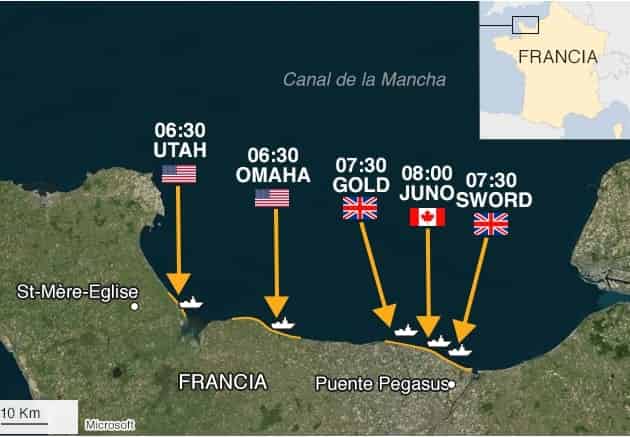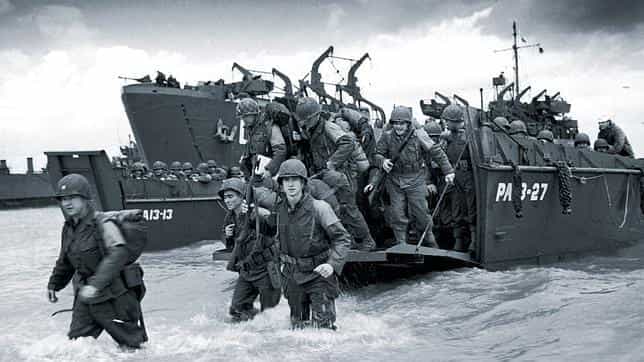What was D-Day?
D-Day – the military term for the first day of the Normandy landing – was the largest amphibious invasion ever undertaken and laid the foundations for German defeat in World War II.
The invasion took place on June 6, 1944, and involved tens of thousands of soldiers from the United States, the United Kingdom, France, and Canada. The landing occurred in five code-named stretches of the Normandy coast: Utah, Omaha, Gold, Juno and Sword.
Planning for D-Day began more than a year in advance, and the Allies carried out major military hoaxes, code-named Operation Bodyguard, to confuse the Germans as to when and where the invasion would take place.
The operation was originally scheduled to begin June 5, when the full moon and low tides were expected to coincide with good weather , but storms forced to delay it 24 hours.
Why is it called D-Day?
“D-Day” is a military term used to designate the first day of any operation.
What happened at the Normandy Landings?
The amphibious landings – called Operation Overlord – were preceded by an extensive bombing campaign to damage German defenses.
The deception tactics employed in the months leading up to the attack led the Germans to believe that the initial attacks were merely a diversion and that the true invasion would take place further along the coast.
Allied divisions began landing on all five beaches at 06:30 a.m. on June 6.
US troops were assigned to Utah Beach at the base of the Cotentin Peninsula and Omaha Beach at the northern tip of the Normandy coast.
The British subsequently landed at Gold Beach, followed by the Canadians at Juno, and finally the British at Sword, the easternmost point of the invasion.
By midnight on June 6, troops had secured their places on the beach and moved further inland from Utah, Gold, Juno, and Sword.
However, not all landings were successful: US forces suffered substantial losses at Omaha Beach, where strong currents forced many boats to land far from their intended positions, delaying and hindering the invasion strategy.
Heavy fire from German positions on the steep cliffs, which had not been effectively destroyed by Allied bombardments prior to the invasion, also caused casualties.

Normandy Landings figures
In total, around 7,000 ships participated in the invasion, including 1,213 warships and 4,127 landing ships.
Some 24,000 Allied soldiers also arrived behind enemy lines shortly after midnight on the day of the invasion, and 132,000 men landed on the beaches.
The troops were supported by 12,000 Allied aircraft, and 10,000 vehicles landed on five beaches.
How many Allied soldiers died in the Normandy landing?
On D-Day alone, 4,414 Allied soldiers died, and more than 9,000 were injured or missing.
The exact number of German casualties on the day is unknown, but it is estimated to be between 4,000 and 9,000.
What happened after Normandy Landings?
Despite securing a stronghold on the French coast on D-Day, the Allied forces faced the risk that the German bombardments could force them to go back to sea.
They needed to increase the number of troops and equipment in Normandy faster than the Germans, which would allow for a continuous invasion into continental Europe.
The Allies used their air power to halt the German advance to Normandy by blowing up bridges, railways, and roads across the region.
This allowed the Allies to gain full control of Normandy 77 days later and advance to Paris, which they liberated in August 1944.






